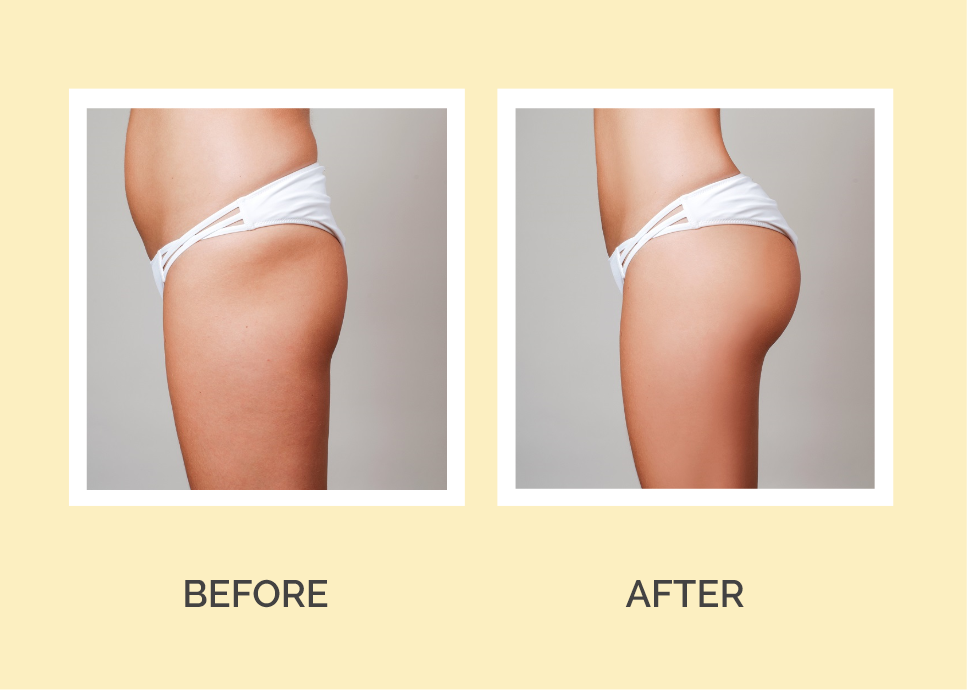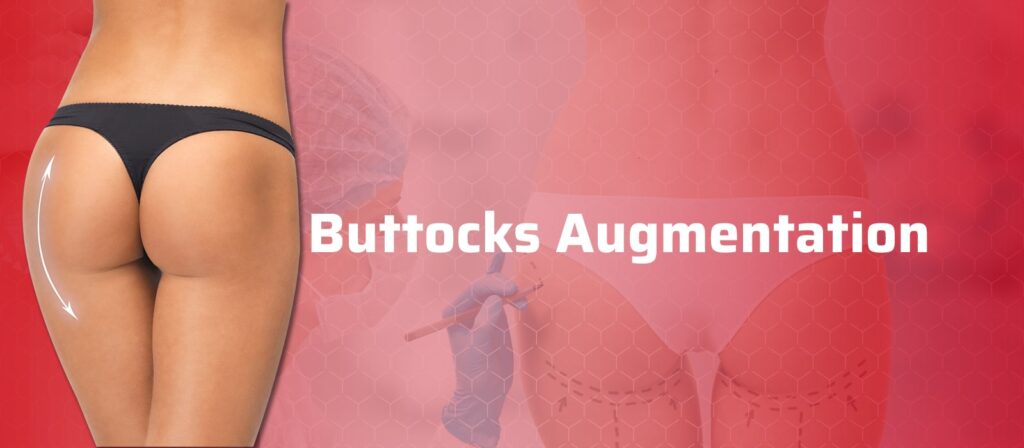
Buttocks augmentation, often referred to as gluteal augmentation or the Brazilian Butt Lift (BBL), is a cosmetic surgical procedure aimed at enhancing the size, shape, and contour of the buttocks. It has grown significantly in popularity over the past decade as individuals seek a fuller, lifted, and more youthful buttock appearance that complements their body proportions.
The procedure can involve different techniques, including fat grafting (autologous fat transfer), implants, or a combination of both, depending on patient needs and anatomical considerations. Buttocks augmentation not only improves aesthetics but can also enhance self-confidence and body image.
This article provides a thorough overview of buttocks augmentation, covering causes and risk factors, signs and symptoms prompting treatment, diagnostic evaluation, treatment options, prevention and management strategies, potential complications, and tips for living well post-augmentation.
Buttocks augmentation is a corrective or aesthetic intervention rather than a treatment for a disease. However, several reasons or “causes” motivate individuals to seek this procedure:
Common Causes
- Genetics: Many individuals have naturally flat or underdeveloped buttocks due to genetic predisposition.
- Aging: Over time, loss of skin elasticity and muscle tone can cause sagging or volume loss.
- Weight Fluctuations: Significant weight loss can reduce fat volume in the buttocks, leading to a deflated appearance.
- Post-pregnancy Changes: Pregnancy and childbirth may cause changes in fat distribution and skin laxity.
- Asymmetry: Uneven size or shape of buttocks causing dissatisfaction.
- Body Contouring Needs: Desire to improve overall body proportions and silhouette.
- Previous Trauma or Surgery: Injury or surgery affecting the gluteal area may reduce volume or shape.
Risk Factors Affecting Procedure Suitability and Outcomes
- Body Mass Index (BMI): Extremely low or high BMI may affect fat availability or increase surgical risks.
- Smoking: Compromises healing and increases risk of complications.
- Chronic Medical Conditions: Diabetes, heart disease, or clotting disorders.
- Poor Skin Quality: Excessively loose or damaged skin may affect results.
- Previous Surgeries: Scar tissue can complicate surgical planning.
- Unrealistic Expectations: Psychological factors impact satisfaction.
Buttocks augmentation is primarily elective and based on aesthetic goals. However, patients considering the procedure often report the following signs:
- Flat or under-projected buttocks: Lack of volume or contour.
- Sagging or drooping skin: Loss of firmness and lift.
- Asymmetry: Noticeable difference in shape or size between the two buttocks.
- Lack of proportion: Buttocks not balanced with hips, waist, or thighs.
- Self-consciousness or dissatisfaction: Emotional distress related to buttock appearance.
- Clothing fit issues: Difficulty finding well-fitting clothes or swimwear.
Diagnosing candidacy for buttocks augmentation involves a detailed clinical evaluation:
Clinical Assessment
- Medical History: Including prior surgeries, medical conditions, allergies, and medications.
- Physical Examination: Assessment of skin elasticity, fat availability, muscle tone, and buttock shape.
- Body Contouring Analysis: Examining overall body proportions to plan optimal augmentation.
- Photographic Documentation: For surgical planning and postoperative comparison.
- Psychological Evaluation: Screening for realistic expectations and mental health concerns.
Imaging (If Needed)
- In select cases, ultrasound or MRI may be used to assess muscle and fat layers, especially if implants are considered.
Buttocks augmentation can be achieved through several techniques, each with pros and cons:
1. Autologous Fat Transfer (Brazilian Butt Lift)
- Procedure: Fat is harvested via liposuction from donor sites (abdomen, thighs, flanks), purified, and re-injected into the buttocks.
- Advantages: Natural-looking results, dual benefit of body contouring at donor sites, no foreign materials.
- Limitations: Limited volume per session, variable fat survival, requires sufficient donor fat.
- Recovery: Moderate downtime; swelling and bruising expected.
2. Buttock Implants
- Procedure: Silicone implants specially designed for the gluteal region are surgically inserted through incisions in the buttocks crease or hip area.
- Advantages: Immediate volume increase, predictable shape and size.
- Limitations: Risk of implant displacement, infection, and visible scarring.
- Recovery: Longer recovery time, activity restrictions.
3. Combination Approach
Some patients benefit from implants combined with fat grafting for enhanced contour and volume.
4. Non-Surgical Options
Injectable fillers or biostimulators (e.g., Sculptra) may offer minor augmentation but are not substitutes for surgical options.
Preoperative Prevention
- Optimize health: Manage chronic conditions, quit smoking, maintain healthy weight.
- Realistic Goals: Discuss expectations with surgeon.
- Pre-surgical planning: Follow all pre-op instructions to minimize risk.
Postoperative Management
- Follow Care Instructions: Use compression garments as advised.
- Avoid Pressure: Avoid sitting directly on buttocks for 2-3 weeks post-fat transfer.
- Monitor for Complications: Watch for signs of infection, excessive pain, or unusual swelling.
- Physical Activity: Gradual return to exercise as guided.
- Nutrition and Hydration: Support healing with balanced diet.
Though generally safe, buttocks augmentation carries risks, including:
- Fat Embolism Syndrome (FES): Rare but serious complication where fat enters bloodstream causing blockage.
- Infection: Surgical site infections requiring antibiotics or revision.
- Seroma or Hematoma: Fluid or blood accumulation around surgical site.
- Fat Necrosis or Poor Fat Survival: Leading to lumps or uneven contours.
- Implant Issues: Displacement, rupture, capsular contracture.
- Asymmetry: Uneven shape or size.
- Nerve or Tissue Damage: Causing numbness or discomfort.
- Scarring: Visible scars especially with implants.
- Prolonged Swelling or Pain
After successful buttocks augmentation, patients can enjoy improved aesthetics and confidence. Key points for long-term wellbeing include:
- Regular Follow-ups: Routine check-ups with your surgeon.
- Maintain Healthy Lifestyle: Exercise and balanced diet to preserve contour.
- Avoid Direct Trauma: Protect augmented area from injury.
- Body Awareness: Monitor for changes such as pain, lumps, or asymmetry.
- Psychological Adjustment: Seek support if needed to adapt to body changes.
1. What is buttocks augmentation?
Buttocks augmentation is a cosmetic surgical procedure designed to enhance the size, shape, and contour of the buttocks. It can be performed using implants or fat transfer techniques to achieve a fuller, lifted appearance.
2. Who is a good candidate for buttocks augmentation?
Good candidates are healthy adults who desire improved buttock volume and shape, have realistic expectations, and are at or near their ideal body weight. Candidates should also have sufficient fat for transfer if considering fat grafting (Brazilian Butt Lift).
3. What are the main methods of buttocks augmentation?
The two main methods are:
- Buttock implants: Silicone implants surgically placed under the gluteal muscles to add volume.
- Fat grafting (Brazilian Butt Lift): Fat is harvested via liposuction from other body areas, purified, and injected into the buttocks for natural enhancement.
4. How is the surgery performed?
For implants, incisions are made near the buttocks crease or hip area, and implants are positioned under the muscle. Fat grafting involves liposuction to harvest fat, which is then carefully injected into specific areas of the buttocks. Both procedures are typically performed under general anesthesia.
5. What is the recovery like after buttocks augmentation?
Recovery usually involves soreness, swelling, and bruising for 2-3 weeks. Patients are advised to avoid sitting directly on their buttocks for at least two weeks and to sleep on their stomach or sides to protect the surgical area. Most people resume normal activities within 4-6 weeks.
6. What are the risks and complications of buttocks augmentation?
Risks include infection, bleeding, implant displacement, fat embolism (in fat grafting), asymmetry, scarring, and dissatisfaction with results. Choosing an experienced plastic surgeon and following post-op care minimizes these risks.
7. How long do the results of buttocks augmentation last?
Results from implants can last many years, often a decade or more, though implants may need replacement. Fat grafting results are permanent, but some fat may be reabsorbed by the body over time, potentially requiring touch-up procedures.
8. Will buttocks augmentation affect my ability to sit or exercise?
Most patients return to sitting and exercising gradually after healing. Initially, sitting directly on the buttocks is discouraged to protect the surgical site. With proper recovery, patients can return to their regular activities and exercise routines.
9. Can buttocks augmentation be combined with other procedures?
Yes, it is often combined with liposuction of surrounding areas to improve overall body contouring or combined with thigh lifts and tummy tucks for comprehensive body reshaping.
10. How do I choose the right surgeon for buttocks augmentation?
Choose a board-certified plastic surgeon with extensive experience in buttocks augmentation. Review before and after photos, read patient testimonials, and discuss all your goals, risks, and recovery expectations during consultation.
Bleeding, infection, nerve and muscle damage are the other possible risks with this procedure. Butt implants can shift and make one buttock different than the other. Other risks include adverse reaction to anesthesia and the need for a second or sometimes third procedure. Risks of infection are higher when incisions are made near the rectal area.
Pain, bruising and some discomfort may occur. Buttock implant patients will not be able to lie on their backs for about 2 weeks. Most surgeons recommend wearing a compression garment to hold down swelling. One can be back to work in 2 weeks.
The other Cosmetic Procedures are:
Few Popular Hospitals for Buttock Augmentation are:
Thailand, Malaysia, Singapore, Turkey and India are the most cost effective locations that offer up to almost 80% savings in comparison to the US.
SurgeryPlanet facilitates a plethora of services to the medical treatment traveler also which includes, a hassle free and discounted travel option, a welcome hand at the airport on arrival, travel in an air-conditioned car, round the clock service & support. Your medical evaluation is pre arranged with the least of waiting time. Once your assessment is complete and found medically fit, the procedure is immediately scheduled without a waiting period. Please read through our Services and Testimonials to understand and select your best options.
Major Treatments Abroad: Obesity / Bariatric Surgery | Spine Surgery | Stem Cell therapy | Fertility treatment | Knee replacement in India and Thailand | Heart Surgery | Organ transplant | Ayurveda Treatment | Heart valve replacement | Hip resurfacing | Hospitals in India and Thailand for Laparoscopic Sterilization| Best hospitals in Asia | JCI & ISO certified Hospitals | Cost effective medical procedures | Healthcare tourism | Complete privacy for affordable cost | Weight loss procedures | Infertility treatment | Board certified physicians | Low cost surgeries
SurgeryPlanet is an Healthcare Facilitator and not a Medical service provider. The information provided in this website is not to be used for diagnosis or treatment of any medical condition or use for any medical purposes. We provide information solely for medical travel facilitation and do not endorse any particular health care provider, hospital, facility, destination or any healthcare service or treatment listed. We are not an agent for, or affiliated to any health care provider, or service listed in our website and is not responsible for health care services provided by them. Choice of hospital or doctor for your healthcare services is your independent decision. Consult your domestic licensed health care provider before seeking the services of any health care provider you learn about from our website.



